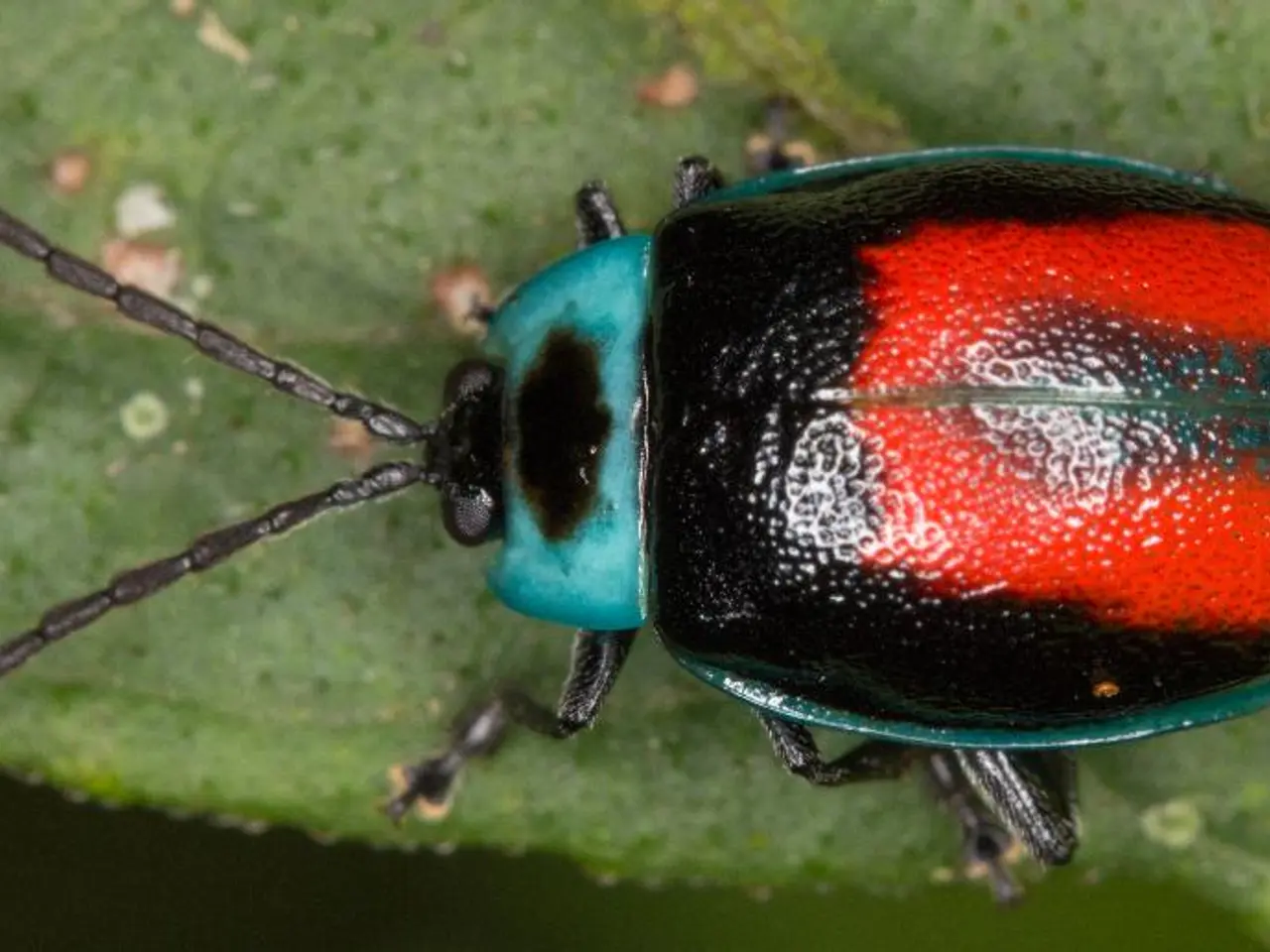Domestic Management of Colorado Potato Beetle Infestations in Personal Vegetable Patches
The Colorado potato beetle, a notorious pest that has been causing havoc in potato fields for over a century, continues to pose a significant threat to crop production. The beetle's resilience and adaptability have led to the evolution of control strategies that are adaptive, integrative, and increasingly biorational.
Early Targeting of Young Nymphs
Insecticide applications are most effective against young larval stages rather than adults. This timing strategy is crucial to maximize control and reduce population recovery in subsequent generations. Early treatment is necessary to prevent crop loss, especially when the larvae are small and feed in groups, causing isolated severe defoliation.
Cultural Controls and Resistance Management
Practices such as removing egg masses by hand, eliminating crop debris, and rotating host crops every season reduce overwintering populations and thus lower beetle numbers in future generations. Moreover, rotating chemical classes in successive applications and generations is critical to maintain effectiveness. This is particularly important in commercial production to manage resistance evolution.
Biorational Ingredients and New Technologies
Experimental methods such as RNA interference (RNAi)-based products targeting Colorado potato beetle's genes are under development. These represent a new generation of biorational control tools aimed at more specific and environmentally-friendly pest management. While not yet widely commercial, these could supplement or replace traditional insecticides in coming generations.
Integrated Pest Management (IPM)
Regular scouting and monitoring allow early detection of populations, enabling timely control measures each generation without unnecessary pesticide use. This integrated, adaptive approach is applied both in home gardens (where hand removal and crop rotation are more feasible) and commercial fields (where resistance management and precision insecticide timing are critical).
Resistance to Insecticides
Repeated and intensive use of insecticides has led to resistance to nearly all insecticides, including Sevin, in many areas. Resistance to many available insecticides, including Sevin and malathion, has been observed in Colorado potato beetles. Complete and thorough coverage of infested plants is necessary for good control.
Identification and Life Cycle
Colorado potato beetles are approximately 3/8 inch long with an oval, convex body and 10 alternating yellow and black stripes on the wing covers. Eggs hatch into dark red, humpbacked larvae with a dark head and two rows of black spots along the sides of the abdomen. New adults appear in mid-summer and repeat the lifecycle.
Other Control Options
Alternating chemical classes can help delay resistance development. Other control options include biorational ingredients such as spinosad, Bt tenebrionis, Neem (azadirachtin), and the pathogenic fungus, Beauveria bassiana. Hand picking beetles, eggs, and small larvae from infested plants is a method for controlling Colorado potato beetles.
The Colorado potato beetle feeds on the foliage of potato, tomato, eggplant, pepper, and other related plants. The beetle is most damaging to potatoes where the defoliation reduces yields and may even kill plants. Despite its destructive nature, the Colorado potato beetle was very familiar to Iowans through the first half of the 20th century but seemed to disappear for a while only to re-emerge as a major pest problem in the 1990s and remain widespread and destructive to this day.
[1] Integrated Pest Management for the Colorado Potato Beetle. Colorado State University Extension. (n.d.). [Online]. Available: https://extension.colostate.edu/topic-areas/insects/integrated-pest-management-colorado-potato-beetle-4-309/
[2] Colorado Potato Beetle. University of California Agriculture and Natural Resources. (n.d.). [Online]. Available: https://ucanr.edu/sites/ugpotato/files/281194.pdf
[3] Colorado Potato Beetle. Iowa State University Extension and Outreach. (n.d.). [Online]. Available: https://extension.iastate.edu/potato/colorado-potato-beetle
[4] Colorado Potato Beetle. Cornell University Cooperative Extension. (n.d.). [Online]. Available: https://nysipm.cornell.edu/resource/colorado-potato-beetle/
[5] Colorado Potato Beetle. University of Maine Cooperative Extension. (n.d.). [Online]. Available: https://extension.umaine.edu/publications/4000e/
- In the practice of home gardening and home-and-garden lifestyle, abundant infestations of insects like the Colorado potato beetle can be challenging, necessitating effective control measures.
- To address this issue, extension services like Colorado State University Extension provide informative resources on Integrated Pest Management (IPM) for the Colorado potato beetle, promoting timely control measures without excessive pesticide use.
- Implementing cultural controls such as hand picking, removing egg masses, crop debris elimination, and host crop rotations can significantly lower beetle numbers for both residential gardens and commercial fields.
- Embracing new technologies and biorational ingredients such as RNA interference (RNAi) products, spinosad, Bt tenebrionis, Neem (azadirachtin), and the pathogenic fungus Beauveria bassiana can supplement or replace traditional insecticides for effective and environmentally-friendly pest management.
- Furthermore, recognizing the life cycle of the Colorado potato beetle, from the young nymphs to the new adults, allows gardeners to target and manage this pest efficiently by adopting proper timing and application strategies.




